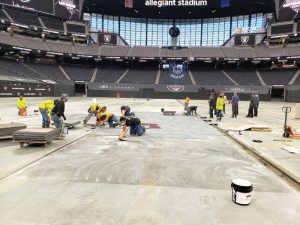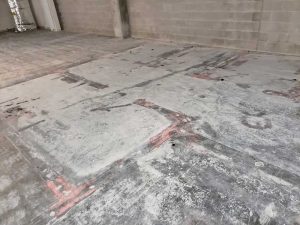
How to ensure flooring specifications stand the test of time
When it comes to flooring specification, understanding appropriate moisture measurement and mitigation, and proper substrate prep is key to avoid costly pitfalls in commercial construction. Specifying industry-recognized practices will guard against disruptive remediation. Aside from the cost, moisture-related flooring failures cause disruptions that can shut down building operations—resulting in lost revenue, health and safety hazards, and discouraged clients.
While floor preparation and moisture testing (including ASTM F1869-16a, ASTM F2170-19a, and ASTM F710-19e1) have become standard practice, these critical steps can be overlooked due to tight timelines, limited budgets, inexperienced contractors, uninformed architects, designers, specifiers, or installation subcontractors who lack adequate knowledge or training. The result can be a plethora of flooring problems appearing as early as days or weeks after installation, including adhesive degradation, bubbling, cupping, gaps between tiles or planks, and moldy conditions.
For these reasons and more, it is critical for architects, designers, and specifiers to understand the root causes of moisture-related flooring failure, the importance of specifying standardized moisture testing, and the role that jobsite preparedness evaluation reports, pre-construction meetings, and pre-installation meetings play in the flooring preparation and installation process. It could mean the difference between their next success story or a black mark on a firm’s reputation.
Current testing standards

Most resilient commercial flooring product designs install over a concrete slab subfloor. Newly poured concrete slabs often take weeks or months to cure, slowly releasing moisture as they dry. When resilient and other non-permeable flooring systems go in place prematurely, they will fail due to the evaporating moisture rising to the surface of the slab.
These moisture problems are only exacerbated by extreme cold, high humidity, and other environmental conditions. Coupled with heavy snowfall and high humidity, concrete slabs in unconditioned spaces can be quick to freeze, affecting the strength of the concrete.
In response to these issues, the American Society for Testing and Materials (ASTM) developed standardized moisture testing and mitigation practices, and knowledgeable architects, designers and specifiers, and well-trained and certified floorcovering contractors have put these standards into practice around the country.
ASTM F1869-16a is an anhydrous calcium chloride test covering the quantitative determination of the rate of moisture vapor emitted from the concrete substrate over time. This relatively simple test involves sealing a small dish of calcium chloride on a clean section of concrete under a plastic dome. The salt absorbs the moisture in the localized environment and the weight gain after three days plugs in to calculate the moisture vapor emission rate (MVER).
While ASTM F1869-16a tests the surface of a concrete slab, ASTM F2170-19a goes a step further. This in-situ relative humidity (RH) test provides quantitative determination of present RH inside a concrete substrate. It formalizes the use of in-situ probes as a means of conducting relative humidity testing, and at the time of its adoption, represented a fundamental change in how we measured moisture in subfloors, as well as the degree of accuracy one could obtain through RH meters.




